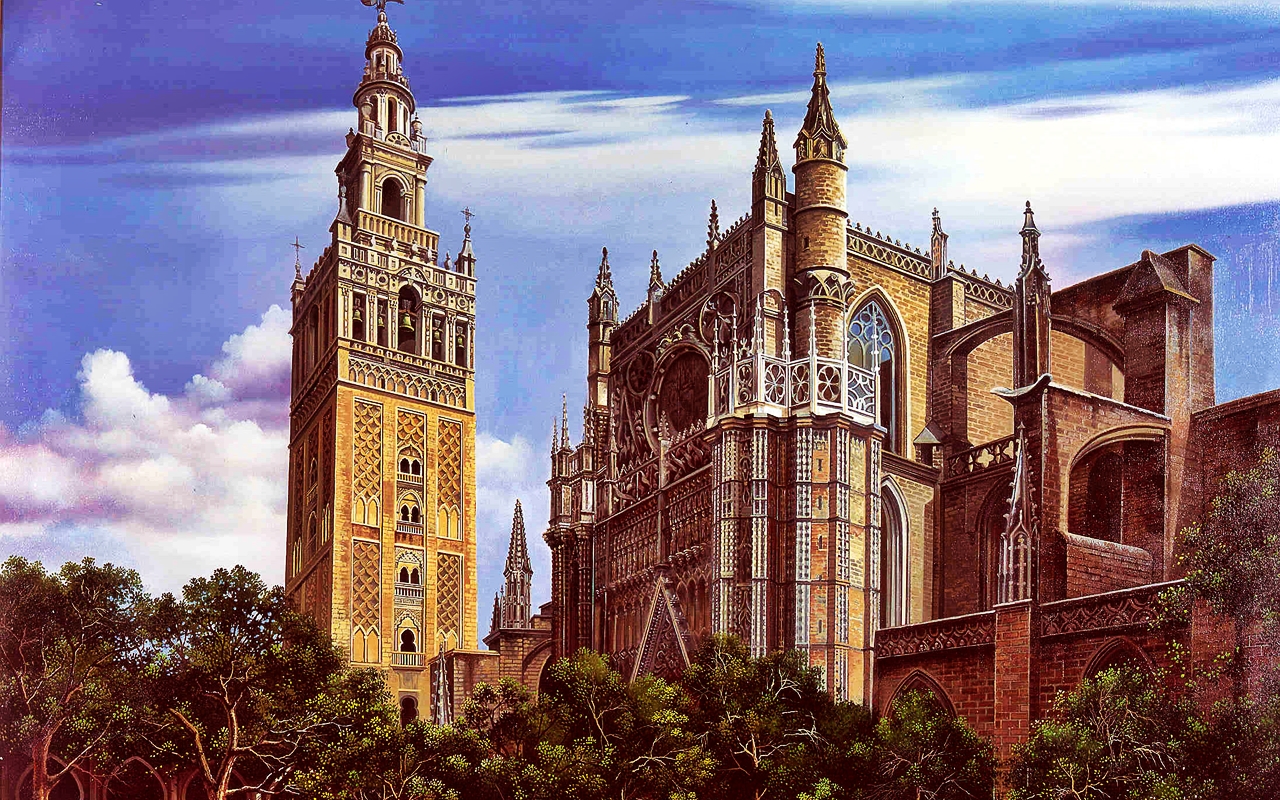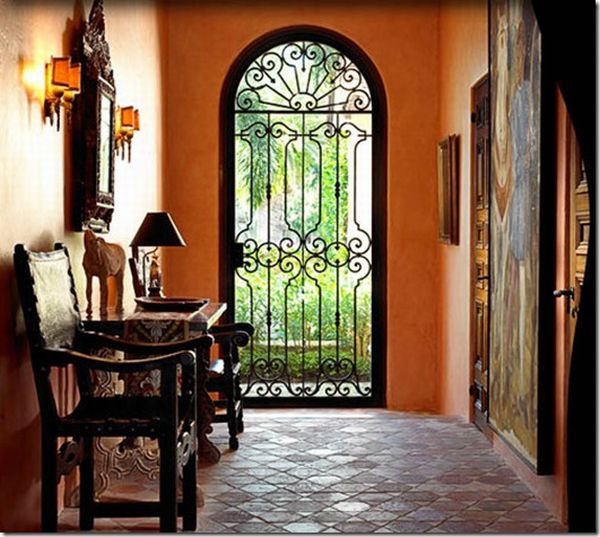Nichole: I liked how in depth Nichole got into the information about the interior designs and the historical relevance of the time period.
Paige: I loved the focus on the reflecting pools in the images that Paige shared on her blog.
Sunday, March 22, 2015
Saturday, March 21, 2015
Spanish Renaissance.
The 16th century was the most brilliant era in Spanish history; the Columbus voyages acquired the title to the new world, there were many successful navigators and traders which resulted in excessive amounts of gold and silver, and in the middle of the century they were at the height of their power.
The Spanish Renaissance was influenced by the Moorish, Early Christian, Medieval, and the Italian Renaissance design.
Cathedral of Seville:
Located in Seville-Andalusia, Spain, this was the largest Cathedral in the world in the 15th century the influential style of this Cathedral was Gothic, larger than the Hagia Sophia, with 80 chapels and 500 masses daily.

La Mota Castle
Medina del Campo 15th century, these castles were built by noble Christian families. The structure of the castles were made of concrete faced with brick. There were more castles in Spain than any other European country.

Plateresco Phase (Silversmith's style)- Gothic or Renaissance in its style, this form of design appeared minute and delicate which resembled the work of a silversmith's, hence the name Silversmith's style. These designs were used on exteriors, patios, churches, public buildings, furniture, and accessories

Modern Day Examples:



The Spanish Renaissance was influenced by the Moorish, Early Christian, Medieval, and the Italian Renaissance design.
Cathedral of Seville:
Located in Seville-Andalusia, Spain, this was the largest Cathedral in the world in the 15th century the influential style of this Cathedral was Gothic, larger than the Hagia Sophia, with 80 chapels and 500 masses daily.

La Mota Castle
Medina del Campo 15th century, these castles were built by noble Christian families. The structure of the castles were made of concrete faced with brick. There were more castles in Spain than any other European country.

Plateresco Phase (Silversmith's style)- Gothic or Renaissance in its style, this form of design appeared minute and delicate which resembled the work of a silversmith's, hence the name Silversmith's style. These designs were used on exteriors, patios, churches, public buildings, furniture, and accessories

Modern Day Examples:



Thursday, March 5, 2015
Peer Reviews: Italian Renaissance.
Emma: I like how Emma had a focused on the history of the Italian Renaissance and that she mentioned the social shift from religious to a secular government.
Alexandra: I liked how Alexandra pointed out that a lot of the furnishings resembled buildings in many ways; a base, multiple stories, columns, and an overhanging cornice. I also really liked her pictures of her modern day examples of Italian Renaissance design.
Alexandra: I liked how Alexandra pointed out that a lot of the furnishings resembled buildings in many ways; a base, multiple stories, columns, and an overhanging cornice. I also really liked her pictures of her modern day examples of Italian Renaissance design.
Italian Renaissance.
The Italian Renaissance began in Florence, Italy in the year 1400. This Period lasted around 200 years, ending around 1600. The local quarries of the area offered an endless supply of marble for the structures, while the interiors were furnished in Gothic and Romanesque design. Everyone-rich or poor- of the time were interested in the arts, which cause a large interest in the interior design of buildings. Comfort, convenience, and beauty became the main focus, while safety, strength, and protection went to the back burner.
Palazzo:
The Renaissance Palazzo design focused on repetition, alternation, and progression, with three level divisions, compound windows, and a heavy project cornice. Like the Roman Domus, these Palazzo's had central courtyards with living spaces on the second and third floors (similar to the Roman "insula"). The ground floor had a vestibule, as well as kitchens, bathrooms, and storage.
Palazzo Davanzati: located in Florence and is a transition from Gothic to Early Renaissance. The interior design of this consisted of frescos, tapestries, and fireplaces.

Palazzo Farnese: originally built for Cardinal Farnese and was completed by Michelangelo. The courtyard consisted of arches, columns, pilasters, and corbels.
_1366398144116.png)
Palazzo Medici: located in Florence, Italy and was the Medici family home. The main focus of the Medici home was on symmetry with an identical array of rooms on either side of the central entrance.

Modern Day Italian Renaissance Design:



Palazzo:
The Renaissance Palazzo design focused on repetition, alternation, and progression, with three level divisions, compound windows, and a heavy project cornice. Like the Roman Domus, these Palazzo's had central courtyards with living spaces on the second and third floors (similar to the Roman "insula"). The ground floor had a vestibule, as well as kitchens, bathrooms, and storage.
Palazzo Davanzati: located in Florence and is a transition from Gothic to Early Renaissance. The interior design of this consisted of frescos, tapestries, and fireplaces.

Palazzo Farnese: originally built for Cardinal Farnese and was completed by Michelangelo. The courtyard consisted of arches, columns, pilasters, and corbels.
_1366398144116.png)
Palazzo Medici: located in Florence, Italy and was the Medici family home. The main focus of the Medici home was on symmetry with an identical array of rooms on either side of the central entrance.

Modern Day Italian Renaissance Design:


Sunday, March 1, 2015
Peer Reviews: The Americas.
Alexandra: I really like how Alexandra broke her blog into the different civilizations of the Americas. I think it is so interesting how spread out the civilizations were in the Americas and how they were so much more advanced than I ever imagined them to be.
Emma: I enjoyed reading all the information she shared on her blog; it was very in depth and it was nice to be able to see the dates along with the information.
Emma: I enjoyed reading all the information she shared on her blog; it was very in depth and it was nice to be able to see the dates along with the information.
Subscribe to:
Comments (Atom)